The Cultural department of the French Consulate in Jeddah with the support of Les Amis de la Culture Francaise honored Saudi photographers by organizing a three-day exhibition at the French Consulate premises.
Louis Blin, the new French consul general, welcomed the guests and diplomats on the occasion. He said he hoped the attendees will find the exhibition fantastic and feel at home in the French Consulate.
“Our main aim behind organizing this exhibition was to introduce Saudi artists to the French and European people, as well as to bring the two cultures and people close to each other. As Princess Reem Al-Faisal studied in France, I believe that she has a French touch in her photography, which is very important for us as we are here to develop mutual understanding between the people and cultures of the two countries,” he said.
Blin said the other photographers especially Esa Engawi, famous Saudi and international photographer, also played a huge role in the exchange of culture and mutual understating between the people of different cultures. He also said in future they are planning to bring French artists from all fields and educationists to Saudi Arabia for interaction between Saudi and French artists and educators.
Blin told the Saudi public that they should work together in the cultural field.
Ambassador Mohammed Ahmed Al-Tayeb, director general of the Ministry of Foreign Affairs, Makkah Region, praised the efforts of the French Consulate for organizing a marvelous exhibition at their premises.
“Today’s exhibition is fabulous, an excellent collection of 30 pictures representing the taste of the photographers and their philosophy, as Princess Reem’s pictures on Haj reflect the importance of Haj in the life of a Muslim. Through her pictures she communicated to Muslims and non-Muslims about the beauty of Haj and a side of this main pillar of Islam. Esa. S. Engawi also showed old and modern architecture of Makkah. We encourage this kind of cultural activities. We hope such activities will continue,” he said.
He also said he would like to see French artists and photographers in Saudi Arabia as this will help in cultural exchange. “I encourage cultural exchange, people-to-people interaction. This constitutes to building a solid relationship between the countries and people."
The exhibition featured photographs of Princess Reem Al-Faisal, who depicted her experience about Haj through the lens.
Princess Reem’s chosen genre is black and white photographs and her photos not only speak more than a thousand words, they have an ethereal quality, exude piety — whether it is that of a palm raised in prayer, Hajis (pilgrims) in singles, twos or in multitude at any of the holy sites such as Mina, Arafat or Muzdalifah, crossing the Makkah Haram courtyard, or a rural scene. Each of her photos conveys individuality as well as universality.
The work of Esa. S. Engawi was based on his experience of architecture and modern buildings. He said he likes to work in all styles but his favorite is portrait, through which he wants to send or give out a message.
“According to me photography is an art which equals 1,000 words. The thing which you can say in 1,000 words can be transformed and understood through one picture.
So we can communicate and express our feelings through a picture better than expressing ourselves in words, as pictures can be read, seen and even touched to get the feeling. My pictures are based on different messages from peace to lost world, spiritual feelings, change from the old era to modern world,” he explained.
Engawi has participated in more than 120 group exhibitions, 14 solo exhibitions and 59 International exhibitions and is a member of more than 20 organizations.
The photographs of Wedad S. Al-Saban, member of Saudi Photographers’ House, were based on her experience of capturing nature through the lens. Al-Saban explained that she is interested in nature. Her works were displayed the first time in 1995. She is now member of seven photographic organizations.
“In my pictures you can see the message of nature and simplicity of life. I love to capture nature in my lens, the small things around us. Beauty always attracts me and has become part of my work. The lessons we are getting from them can be seen in my work,” explained Wedad.
French honor Saudi photographers
French honor Saudi photographers
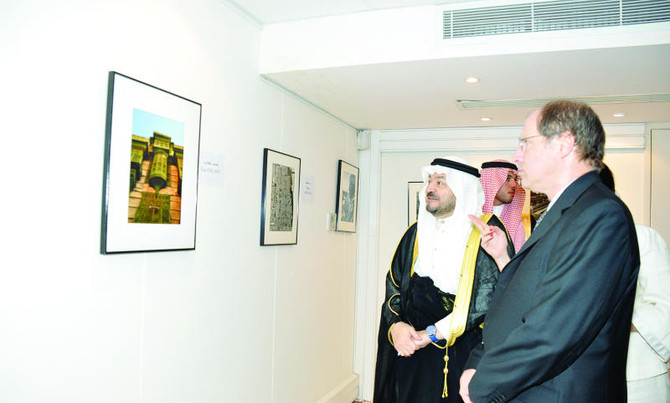
Saudi Center for Space Futures will support lunar mission and $2 trillion global space economy, NASA chief tells Asharq TV

- New center will bring space industries together with government programs, says Bill Nelson on Riyadh visit
- NASA plans to “go back to the moon” with commercial and international partners, agency chief tells Maya Hojeij
RIYADH: The Center for Space Futures, hosted by the Saudi Space Agency, will bring together space industries to send a mission to the moon and build a $2 trillion global space economy by 2035, NASA Administrator Bill Nelson has said.
During a visit to Riyadh this week, the US space agency chief said in a special interview with the Asharq TV channel: “The future of the space center is to bring together space industries, commercial companies, together with the government programs.”
On April 29, the Saudi Space Agency and the World Economic Forum signed an agreement to establish a Centre for the Fourth Industrial Revolution focused on space.
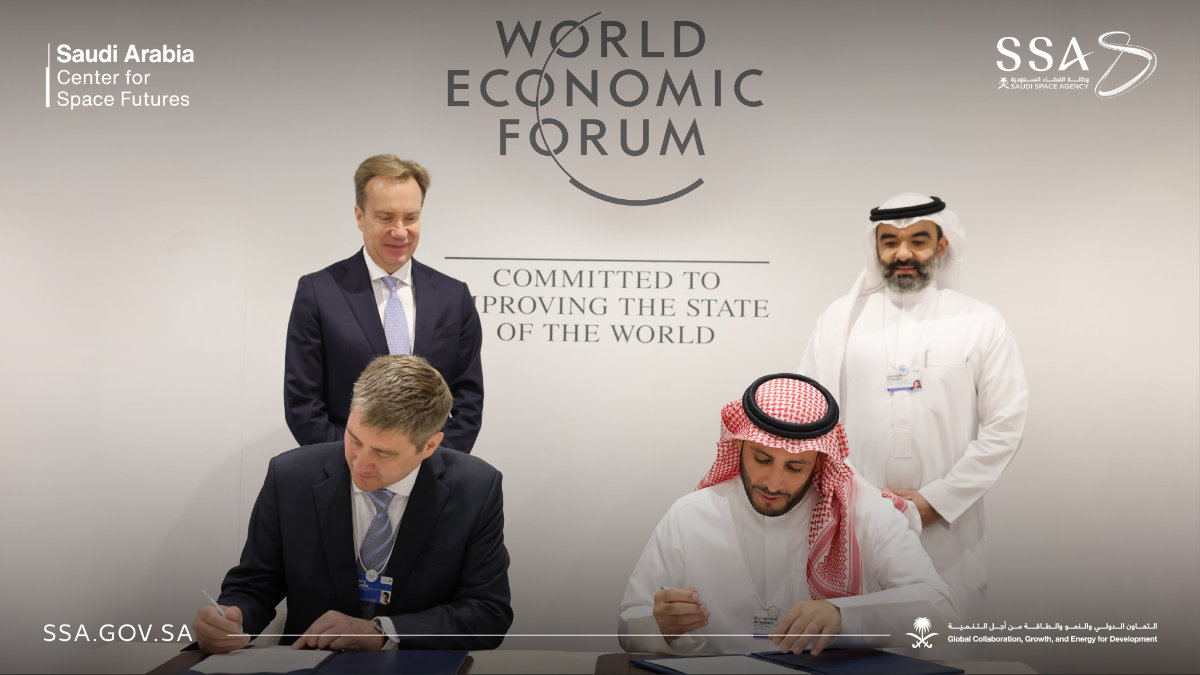
Set to open in the fall of 2024, the Center for Space Futures will be the first center in the C4IR network. It aims to facilitate public-private discussions on space collaboration and contribute to accelerating space technologies.
Nelson told business anchor Maya Hojeij that, after a hiatus of half a century, NASA plans to “go back to the moon.” However, he added: “This time with not only commercial partners, but also with international partners.”
He highlighted that the Center for Space Futures will “bring together those commercial and government programs in order to build a significant space economy.”
Earlier this year, NASA announced that its Artemis II lunar mission will aim to land the first astronauts near the moon’s South Pole in September 2025.
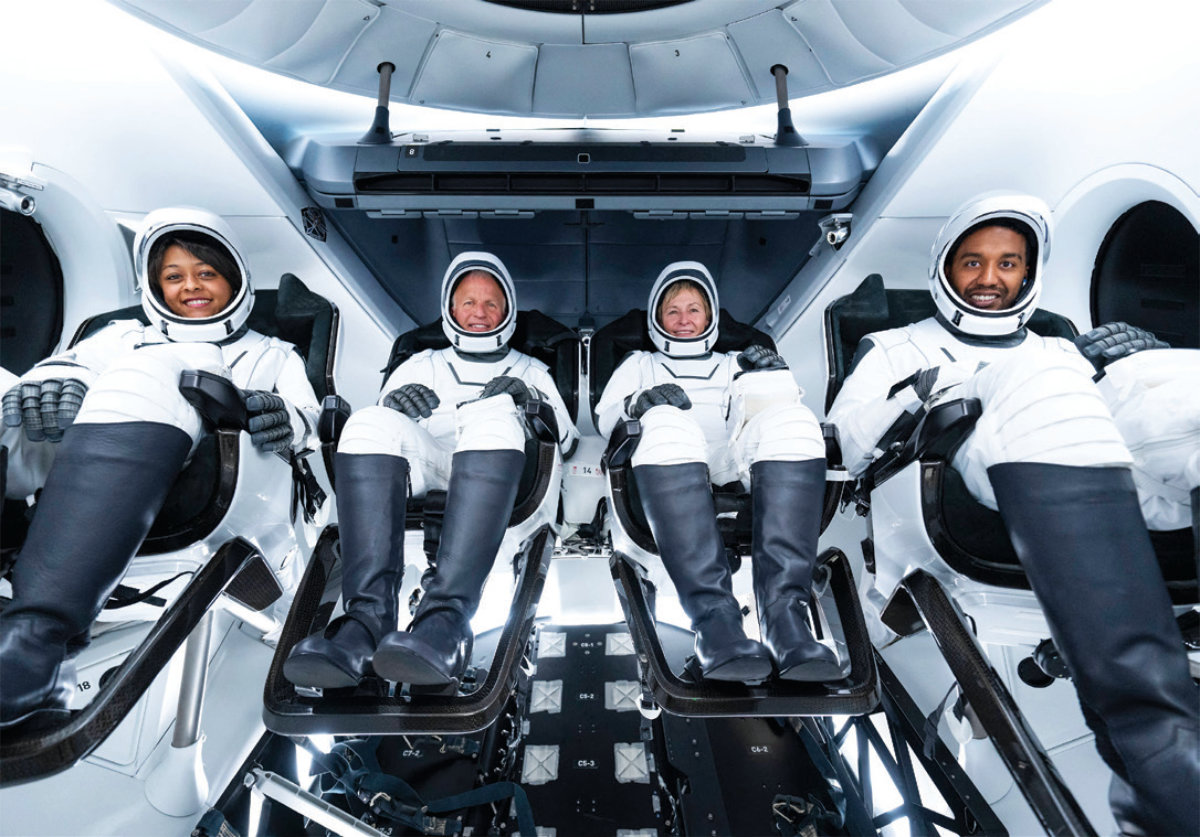
NASA’s administrator added: “We’re talking about a space economy that will be almost $2 trillion dollars by the year 2035 — only a little over a decade away — a significant part of the economic sector of a country.”
Elaborating, he said that the “$2 trillion is worldwide. And that is a lot of startup companies, such as I have seen here in Riyadh today, that are partnering with other companies from around the world that are including incentives by the Saudi government.
“So, we do that in America, and that’s where I mentioned that we’re going back to the moon, this time after a half century, because we were on the moon a half-century ago.
“This time, we’re going back to the moon for a different reason, we’re going to learn, to invent, to create in order to be able to go to Mars and beyond. And this time we go back with commercial enterprises.”
NASA’s Apollo 17, which celebrated its 50th anniversary in December 2022, was the space agency’s sixth and final mission to land people on the moon.
The mission landed on the Taurus-Littrow site, which offered a mix of mountainous highlands and valley lowlands, allowing the crew to collect 741 lunar samples.
Nelson told Asharq’s Hojeij that NASA has partnered with Saudi Arabia on multiple scientific instruments to send Artemis II to the moon for economic benefits and to better understand climate change.
“We have a partnership with Saudi Arabia,” he said. “We’ve already partnered on a number of scientific instruments, but we’ve got a whole way to go.
“We’re going back to the moon and then we’re going to Mars. We are constantly looking down on Earth to help our climate, to better understand what is happening to the Earth, to give very precise measurements of exactly what’s happening there.
“We’re going to coordinate and partner with Saudi Arabia on all of these things.”
Asked about space challenges and how the partnership between Riyadh and Washington sought to address them, Nelson said that debris in space was among the biggest threats to satellites and spacecraft.
“Debris in space is a major problem,” he said. “We are too often having to move our International Space Station to get it out of the way of a piece of space junk that otherwise could hit it.
“Same thing with a lot of our satellites. And so that applies to everybody’s satellites, not just US satellites, Saudi satellites.”
Nelson added that NASA was working with partners “to come up with systems and mechanisms by which we can require the manufacturers of satellites to be able, after their useful life, have a precise landing back through the Earth’s atmosphere to burn up and if any pieces are left over, that they would fall harmlessly in the southern Pacific Ocean.”
Underscoring the importance of these efforts, he said that “whenever something is left in space, it becomes a dangerous projectile that could always ram into something, like our space station.”
The UNU Institute for Environment and Human Security, in its Interconnected Disaster Risks 2023 report, included space debris among its six risk tipping points.
The report, released in February, found that there were 35,150 tracked objects in orbit in 2023. Just 25 percent of these were working satellites while the rest were considered junk, including broken satellites and rocket parts.
As objects in space travel at speeds exceeding 25,000 km per hour, any collision may be “catastrophic,” and even the smallest objects can cause significant damage, according to the same UNU-EHS report.
Asked about the Artemis Accords, which Saudi Arabia signed in 2022, the NASA administrator described it as “a common sense set of principles of the peaceful uses of space.
“For example, in the Artemis Accords, we have that you would come to the aid and assistance of a nation that would have a problem in space,” he said.
“We would develop common elements so that you could help each other out, perhaps remotely in space. But, basically, the thrust of it is the peaceful use of space.”
Saudi Arabia is the 21st country globally and the fourth Middle Eastern nation to sign the Artemis Accords, which set out common principles, guidelines and best practices to ensure safe, peaceful and sustainable space exploration.
Nelson’s visit to the Kingdom is intended to explore future collaboration between the US space agency and key government officials, while also emphasizing the significance of civil space cooperation in the broader US-Saudi relationship.
The Saudi Space Agency was launched by royal decree in December 2018 to accelerate economic diversification, enhance research and development, and raise private-sector participation in the global space industry.
Since its launch, the Kingdom’s state-funded space program has struck deals with several of the world’s established space agencies, astronautical companies and top universities to benefit from advanced technological cooperation.
Saudi Arabia’s space industry holds great potential for growth after recording $400 million in revenue in 2022, according to a report by the Saudi Communications, Space and Technology Commission published late last year.
The global space economy is projected to expand to $1.8 trillion by 2035, marking a threefold increase from $630 billion in 2023, according to research published by the World Economic Forum in April.
A growing number of businesses across sectors including agriculture, construction, insurance and climate-change mitigation, are expected to drive the new and expanding space economy.
This rapid surge is being driven by reduced costs and broader accessibility to space-enabled technologies, encompassing various commercial sectors such as communications, positioning, navigation, timing, Earth observation services, tourism and manufacturing.
While state-sponsored investments will remain the cornerstone of the industry, enhanced collaboration between various stakeholders across public and private sectors will be increasingly important to fully realize the sector’s potential in the future.

Saudi institute gears up to tackle organized crime

- Riyadh forum pushes for stronger global efforts to combat financial crimes
RIYADH: Legal enforcement agencies must outperform organized crime groups by “miles, not just steps,” to prevent criminal alliances forming and flowing across borders, a major Riyadh forum on combating corruption has been told.
In a speech on “Building Human Capabilities to Fight Corruption and Fraud” delivered at the Arab Forum of Anti-Corruption Agencies and Financial Intelligence Units on Wednesday, Abdulmajeed bin Abdullah Al-Banyan, president of Naif Arab University for Security Sciences, said that developing strategies to fight organized crime “presents a significant challenge for both the creators and enforcers of these initiatives.”
He added: “They must ensure that the individuals they train will gain superior knowledge and skills compared to even the most adept criminal organizations as the crimes in question are intricate in nature, often orchestrated by sophisticated transnational gangs that leverage cyberspace and technology to perpetrate their illegal activities while evading detection.”
Organized crime encompasses terrorist groups, drug trafficking, money laundering, migrant smuggling, and human trafficking.
Naif Arab University for Security Sciences examined specialized training programs in the field of economic crime as part of a survey of the Arab region in 2018 .
“We noticed a shortage in the number and type of programs available compared with other regions of the world,” said Al-Banyan.
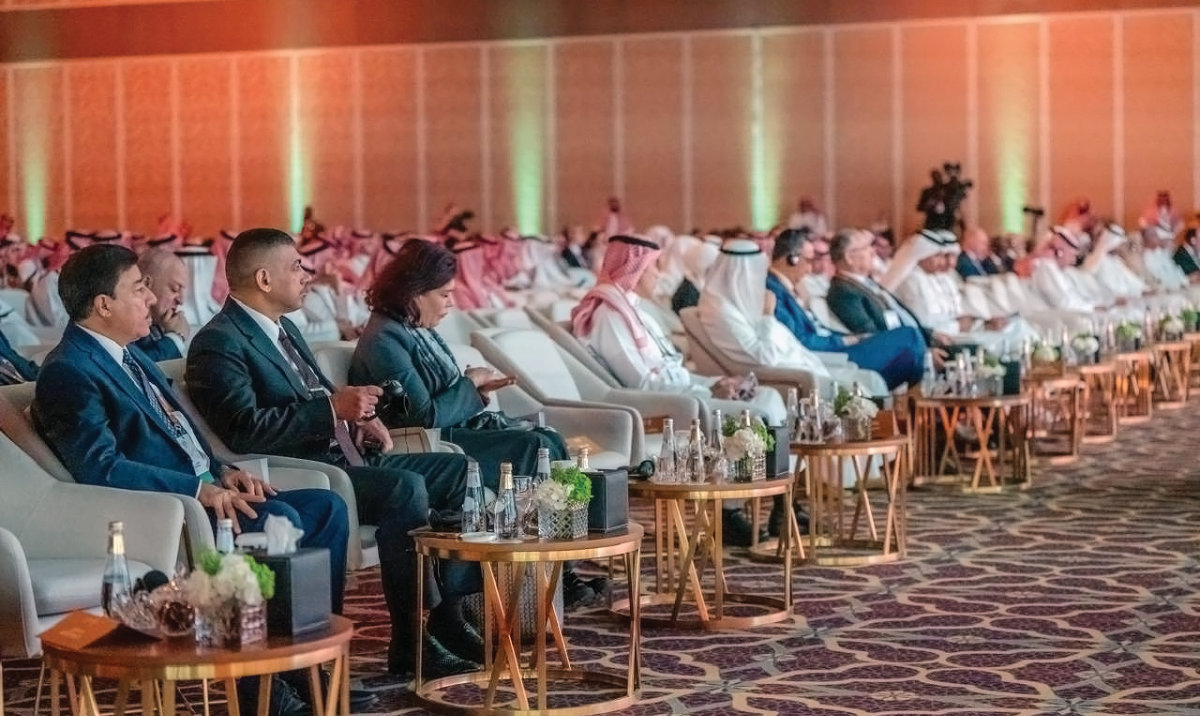
As a result, the university — the scientific body of the Arab Interior Ministers Council — made fighting economic crime one of its main priorities.
“We launched several master’s programs aimed at building capabilities in this field, the most important of which is the master’s program in financial integrity in cooperation with Case Western Reserve University in the US, which specifically aims to prepare experts in combating money fraud,” he said.
The university provides a master’s program in dealing with economic crimes, including corruption and financial fraud, and a master’s program in digital forensic investigation, which focuses on combating cybercrime and suspicious activities online.
NAUSS also launched a new master’s program in artificial intelligence this year, Al-Banyan said.
“We are currently considering adding a new master’s program in forensic accounting, which aims to qualify accountants to detect fraudulent financial practices, and qualifies them to conduct detailed financial investigations and reviews,” he added.
The university signed a memorandum of understanding with the Presidency of State Security in 2016 as part of its efforts to increase its work with key local and international partners.
“We strengthened our relations with the Oversight and Anti-Corruption Authority (Nazaha), and today, we will witness the MoU signing on the sidelines of this forum,” he added.
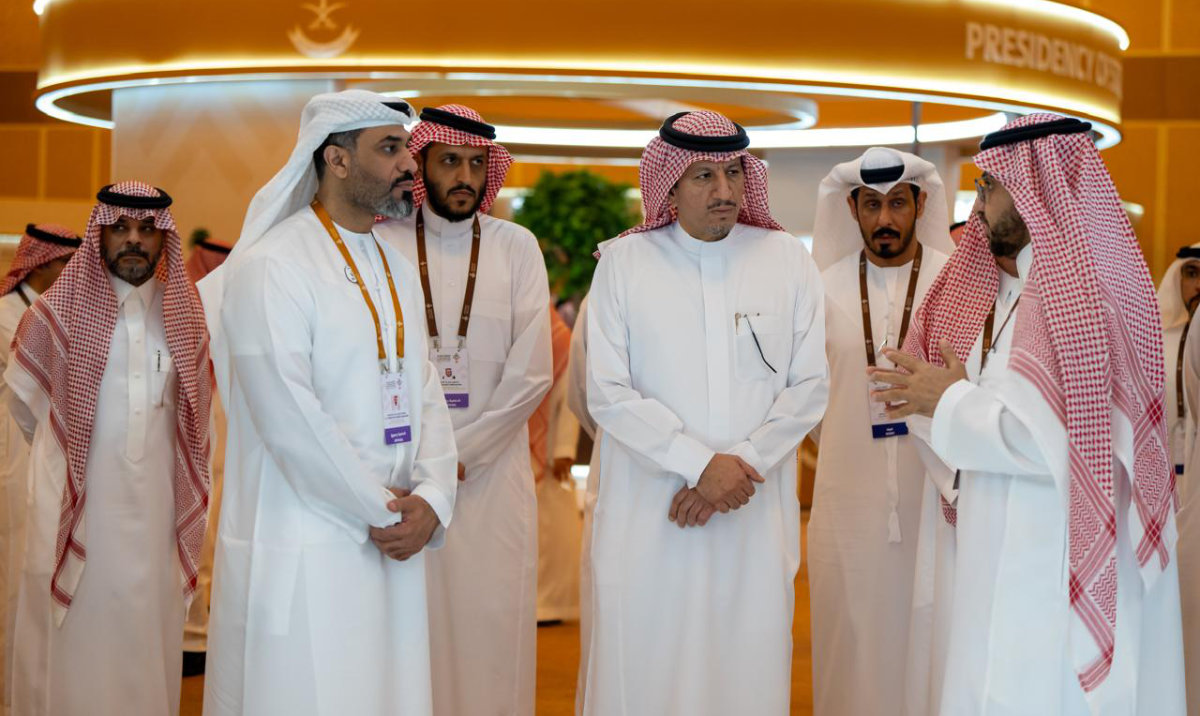
The university has partnered with the United Nations Office on Drugs and Crime, establishing a joint center at its headquarters to support the international and Arab community in combating organized crime, corruption, and money laundering.
Experts highlighted that fighting economic and financial crimes is a complex task that requires clear national strategies and effective cross-border cooperation.
Countries must work together to counter the threat posed by such crimes, which have the potential to severely damage economies and undermine financial systems.
Hassan Mohamud, Somalia’s Minister of Justice and Constitutional Affairs, told the forum that continuing conflict in Somalia has created a “complex money laundering landscape,” making international cooperation crucial for identifying and returning illicit funds.
Speaking during a panel session on “Enhancing Cross-Border Enforcement and Asset Recovery Mechanisms,” Mohamud said that judicial cooperation between countries, and the public and private sectors, is key to addressing these evolving issues.
“The need for sharing information on cross-border flows of money is important to combat money laundering effectively not just in Somalia, but globally,” he said.
In a keynote speech on “National Strategies: Risk Assessment in the Light of Rapidly Changing Realities,” Raed Radwan, head of the Palestinian Anti-Corruption Commission, said: “A national strategy directs efforts and resources fairly and effectively toward achieving specific goals to reduce financial crimes, and enhance integrity and transparency in the financial and economic system.”
He added that citizens have an important role to play in monitoring and reporting crimes, and raising awareness of likely threats.
“Reinforcement training is an awareness-raising activity usually supported by national strategies. It is not limited to employees, but should be available to citizens who wish to acquire knowledge to protect them and make them partners in combating these crimes,” he said.
National strategies also must include a continuous assessment of the risks surrounding financial crimes.
“This basis for evaluation can provide stakeholders with a view of the developments that perpetrators of financial crime can resort to or already resort to,” he said.
Radwan added that political and economic stability are key factors when it comes to halting the rise in financial crimes, which is evident in unstable countries.
“Financial crimes erode trust, affect economic and financial systems, leading to instability in the market, decreased investments, and hindered economic growth, resulting in financial crises,” he said.
Combating corruption and financial crimes is not the task of institutions based on and mandated by law, but is a participatory community task in which various societal sectors participate, Radwan said.
Designer unveils collection inspired by Al-Balad

- Through this collection, we invite our guests to not just wear garments, but to immerse themselves in an experience of a journey through time, culture and elegance: Makram Marzuki
JEDDAH: Saudi designer Makram Marzuki, in collaboration with Al-Balad Hospitality, hosted a captivating trunk show at heritage hotel Beit Jokhdar in Al-Balad on May 14-15.
The event showcased Marzuki’s latest collection, which draws inspiration from the rich cultural heritage of the historic district of Jeddah.
Marzuki’s latest show not only celebrated the beauty of Al-Balad but also offered a glimpse into the designer’s creative process and dedication to preserving Saudi heritage through contemporary fashion.
Speaking about the setting of the show, which emphasized telling the story beind the collection, Marzuki expressed his vision of creating a distinctive shopping experience that resonates with the history and essence of Al-Balad.
“Understanding the psychology of the Saudi woman who values luxury, we recognize her desire for more than just a generic store,” Marzuki said.

“Our goal is to provide an engaging and enjoyable shopping experience where connections are forged and memories are made. Witnessing women greet each other warmly, sharing stories and embracing the fusion of old and new, reaffirms our belief in bringing the past into the future.”
Marzuki revealed that the collection, which features luxurious and refined pieces, is a reflection of the heritage and architectural elements of Al-Balad, such as the intricate designs of “rawasheen” or “roshan,” the patterned wooden frames on windows and balconies.
The designer highlighted the attention to detail and craftsmanship that went into creating each garment, evoking a sense of quiet luxury that aligns with the ambiance of Beit Jokhdar.
“The trunk show and the hotel seamlessly blend together,” he said. “We aimed for an atmosphere of understated elegance, echoing the hotel’s over 100-year-old legacy.”

The designer shared insights into the design process, adding that the collaboration with Samaher Bashammakh from the Royal Institute of Traditional Arts was instrumental in bringing the collection to life as well as ensuring that every detail harmonized with the concept of luxury.
“The result is an intimate and luxurious experience, similar to browsing through a woman’s own closet,” he said. “We wanted to create a space that felt personal, where guests could immerse themselves in the brand’s ethos of sophistication and refinement.”
A white dress crafted from a luxurious cotton-silk blend and adorned with lace details reminiscent of the graceful lines of the roshan exemplified the fusion of traditional elements with modern design, he said. “Through this collection, we invite our guests to not just wear garments, but to immerse themselves in an experience of a journey through time, culture and elegance.”
Speaking about his favorite piece, he said: “The challenge of translating the delicate intricacy of the roshan into velvet jacquard fabric was immense, but the result is truly breathtaking. It’s a testament to the craftsmanship and dedication that went into every detail. This garment symbolizes the fusion of tradition and innovation, and it’s truly fantastic to see it come to life.”
Reflecting on the event, Marzuki emphasized the importance of storytelling in design and encouraged young designers to delve deep into their inspirations to create meaningful collections.
He hinted at a new collection set to launch in October, promising another showcase of exquisite craftsmanship and cultural references.
Digital ID launched for pilgrims arriving from outside Saudi Arabia

- The digital identity service is part of Saudi government efforts to enable digital transformation
- The move aims to facilitate pilgrims’ use of digital identity to enhance quality of services
RIYADH: The Saudi Ministry of Interior on Wednesday launched the digital identity service for pilgrims arriving from outside the Kingdom with a Hajj visa for this year’s season, the Saudi Press Agency reported.
The digital identity service is part of the Saudi government’s efforts to enable digital transformation and harness technology to help people in accordance with the goals of the Saudi Vision 2030.
Developed in cooperation with the Ministry of Foreign Affairs and the Ministry of Hajj and Umrah and the Saudi Data and Artificial Intelligence Authority, the service caters to those performing the annual ritual, according to the Interior Ministry, and enables pilgrims to prove their identity electronically through the Absher and Tawakkalna platforms.
The move aims to facilitate pilgrims’ use of digital identity to enhance the quality of services provided to them and enrich their experience.
It was also launched for pilgrims to experience the highest quality of service, and to keep pace with developments in digital transformation in the services provided to them throughout their stay in Saudi Arabia.
The ministry’s General Directorate of Passports also launched on Wednesday a special passport stamp for those benefiting from the Makkah Route Initiative. The stamp contains the initiative’s visual identity.
The stamp will be made available through designated lounges at 11 airports around the seven countries benefiting from the initiative, which are Morocco, Indonesia, Malaysia, Pakistan, Bangladesh, Turkiye and Cote d’Ivoire.
The Makkah Route Initiative is one of the ministry’s initiatives within the program of serving pilgrims.
Saudi FM meets with Slovenian counterpart

- During the meeting, the ministers discussed ways to enhance cooperation relations between their countries in various fields
RIYADH: Saudi Foreign Minister Prince Faisal bin Farhan received his Slovenian counterpart Tanja Fajon in Riyadh on Wednesday.
During the meeting, the ministers discussed ways to enhance cooperation relations between their countries in various fields and intensify bilateral coordination on issues of common interest.
They also discussed international developments and efforts made in this regard.
















